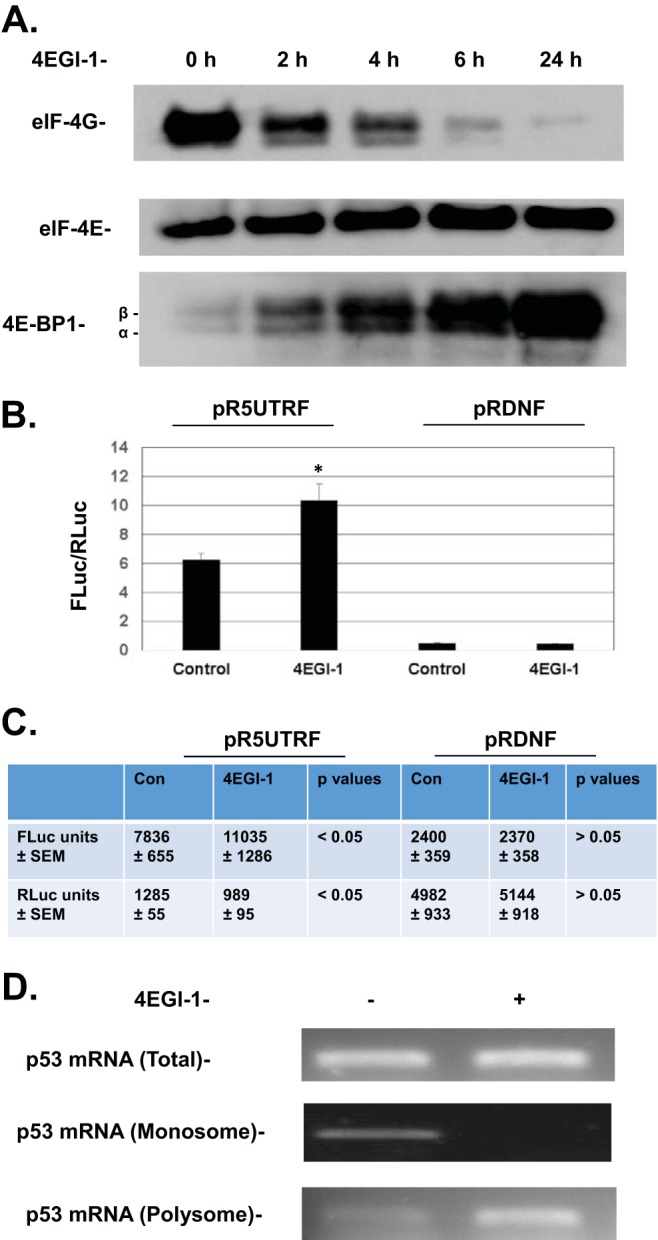FIG 2.

(A) 4EGI-1 treatment results in decreased association of eIF4G with eIF4E and increased interaction between 4E-BP1 and eIF4E. LNCaP cells were treated with 50 μM 4EGI-1 for the indicated time points. After treatment, the cells were lysed, and equal amounts of proteins were incubated with m7-GTP-Sepharose beads. After incubation, the beads were washed and mixed with SDS-PAGE loading buffer as described in Materials and Methods. The eluted proteins were then subjected to SDS-PAGE and transferred to a PVDF membrane. eIF4G, eIF4E, and 4E-BP1 were then detected. (B and C) 4EGI-1 significantly stimulates the activity (FLuc/RLuc) of p53 IRES. After transfection with pR5UTRF and pRDNF for 24 h, LNCaP cells were treated with 50 μM 4EGI-1 for another 24 h. The cells were then lysed, and a dual-luciferase assay was performed as described in Materials and Methods. The FLuc/RLuc ratios in panel B are averages ± the standard errors of the mean (SEM) from four repeats (*, P < 0.05 versus cells transfected with pR5UTRF but not treated with 4EGI-1). The corresponding average values of FLuc or RLuc ± the SEM in the presence or absence of 4EGI-1 along with P values between FLuc or RLuc units from 4EGI-1-treated or untreated cells are also shown in panel C. (D) p53 mRNA associates with polyribosomes in 4EGI-1-treated LNCaP cells. Cells were treated with 50 μM 4EGI-1 for 24 h and then lysed in a polysomal buffer. The fractionation of cytoplasmic polyribosomes and monoribosomes was performed as described in Materials and Methods. The RNAs in the polyribosomal fraction, monoribosomal fraction, and the cytoplasmic extracts were isolated and were subjected to reverse transcription and semiquantitative PCR for p53 mRNA as described in Materials and Methods.
